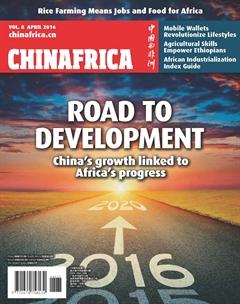Media Watch
SOE REFORM China Economic Weekly March 14
After three years planning, measures to reform the state-owned enterprises (soes) will be implemented this year. According to China Economic Weekly, the reforms include giving soes board of directors real power, recruiting professional managers, as well as promoting mixed ownership and employee share ownership. this round of reforms will be market-oriented, starting with repositioning the state-owned Assets supervision and Administration commission (sAsAc) so that it focuses on managing the nations capital instead of intervening in soes work. in this way, soes will become independent and competitive market entities.
to survive in the market and grow stronger, soes need to enter the global arena. “with china seeking more and more globalization, chinese soes main competitors are now foreign firms,” said wang Zhigang, head of china enterprise Reform and development society, a think-tank under the sAsAc. to have a voice in the international market, chinese companies have to be strong and big, he said. Mergers and acquisitions are a good way to integrate different companies in the same sector and enhance competitiveness.
Growth Secrets Oriental Outlook March 10
hangzhou, the capital of Zhejiang Province in east china, became the 10th chinese city whose GdP surpassed 1 trillion yuan ($153.5 billion) last year. the other nine include shanghai, Beijing, Guangzhou, shenzhen and tianjin.
Oriental Outlook looks at the secret of high growth in these cities, dubbed the 1-trillion-yuan GdP club. opening up to the global market, putting emphasis on innovation and promoting hi-tech and service industries are the common characteristics of this clubs members.
the service sector output in nine of the 10 cities surpassed half of the local GdP. this indicates they have achieved remarkable progress in developing their hi-tech and cultural industries and balancing economic growth with environmental protection.
As china enters the “new normal” of slower growth, there are both great opportunities and serious challenges. the development path of the 1-trillion-yuan club matches the pattern of innovative, coordinated, green, open and shared development set forth in the 13th Five-year Plan (2016-20) and is essential to solving the problems china faces.
Old is Gold Peoples Daily March 15
the new media has grown rapidly. it boasts faster information dissemination, closer interaction with readers and customized services. however, traditional media such as newspapers, the radio and tV still have their advantages.
First of all, traditional media sources are more reliable. Various surveys in china have showed that 70 percent people regard traditional media as the most trustworthy information source. compared with new media that prioritizes speed, traditional media attaches more importance to veracity and objectivity of reports. Also, it possesses experienced journalists and editors who are able to provide high-quality news and information services. in addition, traditional media is more conducive to comprehensive and systematic reading. A large number of new media channels provide only fragmented and elementary information that lacks in-depth thinking and analysis. such reports are often only cursorily glanced over by readers while traditional media enables them to get more knowledge and improve the ability to think.
emphasizing the importance of traditional media is in no way meant to resist new media. traditional and new media are not incompatible. to the contrary, the former can gain more popularity by fusing with the latter.
Optimistic Outlook China Newsweek March 14
supply-side structural reform was a highlight of this years Government work Report delivered by Premier li Keqiang at the Fourth session of the 12th National Peoples congress, chinas top legislature. on the one hand, industries such as steel, cement, coal, electrolytic aluminum, and solar and wind power are plagued with overcapacity. on the other hand, chinas production and supply structure cannot satisfy consumers increasing demand for medium- and high-end products. the reform will counter this prominent problem faced by chinas economy.
however, it will take time for the reform to have an effect. hence, the government is also employing fiscal and monetary tools to deal with the challenges. li said in his report that a more proactive fiscal policy will be adopted. the deficit ratio will be raised to 3 percent, up from 2.3 percent last year. the budget deficit will also be increased to 2.18 trillion yuan ($335 billion), the highest since 1949.
According to Qian Jun, professor at china Academy of Financial Research under shanghai Jiao tong university, compared with other developed nations, chinas current deficit ratio is relatively low. he noted that china still has plenty of policy tools at its disposal to confront the downward economic pressure.

